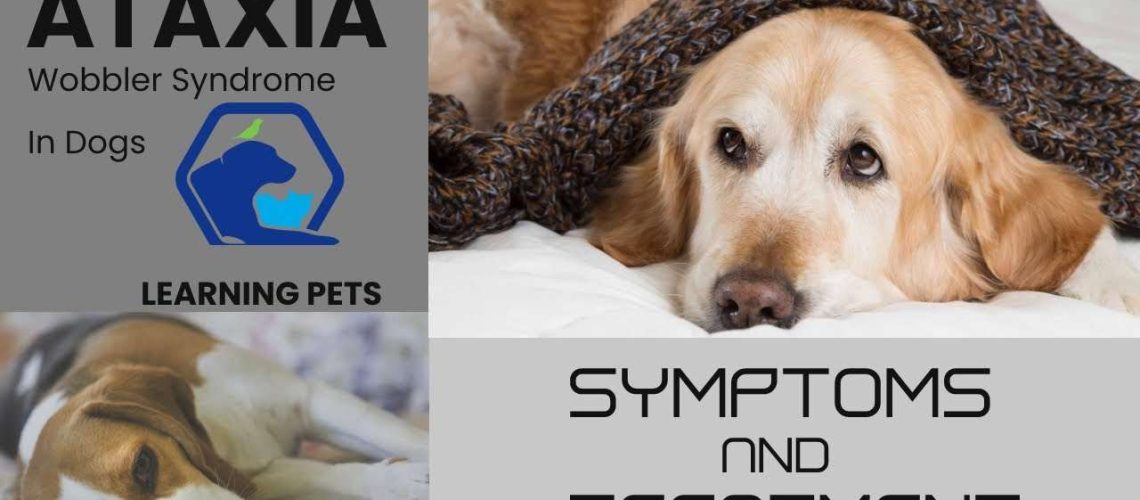Key Takeaways:
- Ataxia in dogs can be caused by various factors, including genetic disorders, trauma, infections, or toxins.
- Common symptoms of ataxia in dogs include uncoordinated movements, stumbling or falling, head tilting, and difficulty with balance.
- Diagnosing ataxia involves a thorough physical examination, neurological assessment, and potentially additional tests such as blood work or imaging.
- Treatment for ataxia depends on the underlying cause and may include medications to manage symptoms, physical therapy, or surgical intervention in some cases.
- Prevention of ataxia in dogs involves avoiding exposure to known toxins or substances that can cause neurological damage and ensuring proper nutrition and exercise to maintain overall health.
Are you a dog lover who wants to ensure the well-being of your furry friend? If so, understanding the topic of ataxia in dogs is essential. Ataxia refers to a condition that affects a dog's coordination and balance, causing them to stumble or have difficulty walking. By delving into this subject, you will gain valuable knowledge on the causes, symptoms, diagnosis, treatment, and prevention of ataxia in dogs. Whether you are a pet owner or simply interested in learning more about canine health, this topic will provide you with insights that can help keep your four-legged companion happy and healthy. So let's embark on this journey together and unravel the mysteries surrounding ataxia in dogs!
Understanding Ataxia in Dogs: Causes and Symptoms
Causes of Ataxia in Dogs
Ataxia in dogs can have various causes, including genetic disorders, infections, trauma, or underlying medical conditions. Genetic disorders such as cerebellar abiotrophy and hereditary ataxias are often responsible for ataxia in certain dog breeds. Infections like distemper or tick-borne diseases can also lead to ataxia. Trauma to the head or spinal cord can result in temporary or permanent ataxia. Additionally, certain medical conditions like vestibular disease or brain tumors may cause ataxic symptoms.
Symptoms of Ataxia in Dogs
Identifying the symptoms of ataxia is crucial for early detection and treatment. Dogs with ataxia may exhibit uncoordinated movements, wobbling or stumbling while walking, difficulty balancing, falling over frequently, or having a wide-legged stance. They may also experience tremors or involuntary muscle movements. Other signs include changes in behavior, loss of appetite, and decreased energy levels. If you notice any of these symptoms in your dog, it's important to consult a veterinarian for a proper diagnosis.
Recognizing Ataxia in Your Dog: Signs to Watch Out For
Physical Signs of Ataxia
When trying to recognize ataxia in your dog, pay attention to physical signs such as unsteady gait (walking), lack of coordination when playing or jumping, stumbling or falling over frequently, and swaying from side to side while standing still. These signs indicate an issue with their balance and coordination.
Behavioral Signs of Ataxia
Apart from physical signs, there are behavioral indicators that your dog may be experiencing ataxia. These include changes in appetite, decreased energy levels, reluctance to exercise or play, and difficulty performing routine tasks like climbing stairs or getting into a car. If you notice any of these signs, it is essential to consult a veterinarian for a thorough examination.
Diagnosing Ataxia in Dogs: Tests and Examinations by Veterinarians
Veterinary Examination
When diagnosing ataxia in dogs, veterinarians will begin with a comprehensive physical examination. They will observe the dog's gait, coordination, and overall body condition. The veterinarian may also perform neurological tests to assess the dog's reflexes, muscle tone, and sensory responses.
Diagnostic Tests
To further investigate the underlying cause of ataxia, veterinarians may recommend additional diagnostic tests. These can include blood tests to check for infections or metabolic disorders, imaging studies such as X-rays or MRI scans to examine the brain and spinal cord, and cerebrospinal fluid analysis to detect any abnormalities in the central nervous system. These tests help veterinarians determine the specific cause of ataxia in order to develop an appropriate treatment plan.
Treatment Options for Ataxia in Dogs: Managing the Condition
Medication
The treatment approach for ataxia depends on its underlying cause. In cases where ataxia is caused by an infection or inflammation, veterinarians may prescribe antibiotics or anti-inflammatory medications. For genetic conditions or degenerative diseases that cannot be cured, supportive care with medication may be provided to manage symptoms and slow down disease progression.
Physical Therapy
Physical therapy can play a crucial role in managing ataxia in dogs. It involves exercises and techniques that help improve balance, coordination, and muscle strength. Physical therapists may use obstacle courses, balance boards, or underwater treadmills to assist dogs in regaining their mobility and stability.
Preventing Ataxia in Dogs: Measures for Reducing Risk
Vaccinations
Ensuring that your dog is up-to-date on vaccinations can help prevent ataxia caused by infectious diseases such as distemper. Regular vaccinations protect your dog from potentially serious infections that can lead to neurological problems.
Regular Veterinary Check-ups
Regular veterinary check-ups are essential for early detection of any underlying conditions that may cause ataxia. By monitoring your dog's overall health and addressing any potential issues promptly, you can reduce the risk of ataxia or catch it in its early stages for better treatment outcomes.
Breeds Prone to Ataxia in Dogs: Which Ones and Why?
Breeds Prone to Ataxia
Certain dog breeds have a higher predisposition to develop ataxia due to genetic factors. These include the Scottish Terrier, Kerry Blue Terrier, Beagle, Brittany Spaniel, and Siberian Husky. These breeds may carry specific gene mutations that affect the development or function of the cerebellum, leading to ataxic symptoms.
Genetic Factors
The genetic mutations responsible for ataxia in these breeds are often inherited from parents who carry the same mutation. Breeding practices that do not prioritize genetic testing and screening can contribute to the prevalence of these mutations within certain breed populations. Responsible breeding practices involve genetic testing to identify carriers of these mutations and avoiding breeding them together to reduce the risk of passing on ataxia-related genes.
In conclusion, ataxia in dogs is a condition that affects their coordination and balance. It can be caused by various factors and can lead to symptoms like stumbling or falling. Early diagnosis, proper treatment, and preventive measures are important to help manage this condition and improve the quality of life for dogs affected by ataxia.
What triggers ataxia in dogs?
Ataxia in dogs can be caused by various factors such as injury, infection, inflammation, or exposure to toxins that impact their nervous system.
How do you fix ataxia in dogs?
Dogs with ataxia are often advised to undergo physical therapy. In certain cases, like intervertebral disc disease, surgery may be the most effective treatment option. If there are tumors present, your veterinarian may suggest chemotherapy or radiation therapy as well.
What are the 3 types of ataxia in dogs?
Dogs can experience three distinct types of ataxia: proprioceptive ataxia, cerebellar ataxia, and vestibular ataxia. Each type has its own symptoms and underlying causes. If you suspect that your dog is experiencing ataxia, it is crucial to have them examined by a veterinarian as soon as possible.
What is the life expectancy of a dog with cerebellar ataxia?
The time from when symptoms first appeared to when euthanasia was performed ranged from 6 months to 6.5 years, with most affected dogs living for 2 to 4 years.
What are 3 causes of ataxia?
Ataxia is typically caused by damage to the cerebellum or its connections, which control muscle coordination in the brain. There are several factors that can lead to ataxia, including alcohol abuse, stroke, tumors, brain degeneration, multiple sclerosis, specific medications, and genetic disorders.
Does ataxia come on suddenly in dogs?
Ataxia can develop slowly or suddenly, depending on the underlying cause. The severity of symptoms may vary among different dogs, with some showing more noticeable signs and others experiencing milder symptoms. In certain instances, the condition can progress and deteriorate over time.

















